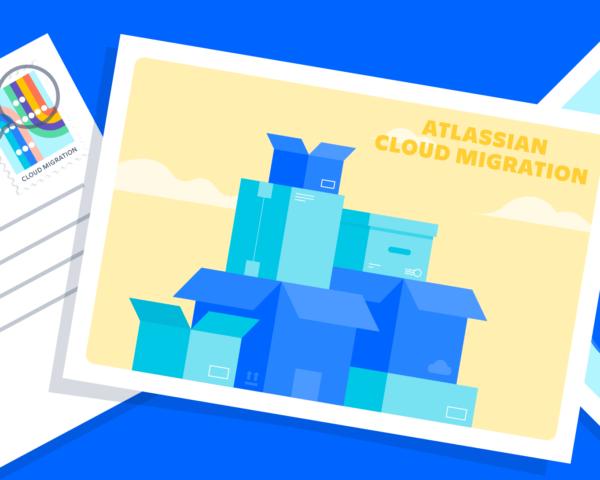6 ways cloud improves speed and performance
Improving the speed of IT service delivery is one of the top reasons companies choose cloud.
A whopping 42 percent of professionals say improving network performance is one of the top reasons to move to the cloud. And the bigger your company, the more performance matters. In fact, in companies with more than 1,000 employees, 76 percent of leaders surveyed say they’re adopting the cloud to improve the speed of IT service delivery.
How exactly does cloud make your business faster? Here are six ways:
1. Better network performance
In 2019, network performance became the number one reason companies cited for moving to the cloud (up from third in 2018), according to a survey by INAP.
The reason for this shift might surprise you: customer retention. Performance doesn’t just impact your IT teams; if your systems don’t perform, you’re also likely to lose customers. And since retaining an existing customer is five to 25 times less expensive than getting a new one, network performance has a direct impact on a company’s bottom line.
The two key elements of network performance are low latency (processing a high volume of data with little or no delays for the user) and high availability (near-perfect systems uptime). Both of which can often be improved by a move to the cloud. Low latency is supported by the fact that good cloud vendors often store data close to your user base. High availability is supported by 24/7 teams dedicated to cloud and only cloud.
2. Uptime guarantees
Any cloud provider worth its salt will offer you an uptime guarantee (and, in turn, the peace of mind that comes with knowing your systems will be available nearly 24/7).
Atlassian’s Premium Cloud guarantees 99.9 percent uptime, and offers service credits if that SLA isn’t met. In our Cloud Enterprise plan, we increase that financial guarantee to 99.95 percent. Both plans include 24/7 support with a response time of an hour or less.
3. Automatic performance upgrades
Automatic upgrades improve performance while also ensuring there’s no lag time in getting to that better performance (since there’s no manual upgrade process involved). This means you always have access to the best-performing tools and never fall behind your competitors.
4. Faster product development and deployment
Another way cloud outperforms on-prem hosting in the speed department is continuous integration (the practice of syncing developers’ work throughout the day) and continuous delivery (deploying small software changes quickly and regularly).
CI and CD are best practices for both DevOps and Agile and, while it’s difficult to pin down exact numbers, their adoption appears to be pretty widespread. The primary benefit of CI is that it increases speed (and consistency) as your team prepares for deployment, while CD is useful because it surfaces changes to your users faster and in smaller batches that can be easily dialed back in case of an incident.
So, what does all this have to do with moving to the cloud? Well, much like enabling remote work and distributed teams, you can practice CI/CD on-prem, but cloud is generally faster and less complicated. After all, with cloud, you have instant access to more computing power and more machines, which means you can run CI/CD tasks simultaneously and make these keystone practices significantly faster.
5. Automatic scaling and load-balancing
With on-prem hosting, computing power is always finite. You have a set number of servers, a set number of load balancers, and a set amount of power. This means that if your user base grows quickly or unexpectedly, your systems could slow to a crawl or, worse, go down altogether.
With automatic scaling in the cloud, computing power can scale up as high as it needs to in order to handle unexpected spikes in use. So, if your external user base quadruples overnight because Oprah tweeted about you, or you have to double your internal team size within a week to meet new demand, speed doesn’t suffer.
6. Standardization
Some teams use a move to the cloud as a chance to streamline internal processes, embracing migration as an opportunity to improve speed and productivity both inside and outside their tools.
Much like moving to a new house is often an opportunity to go through your closets and get rid of things you don’t need – those shoes that pinch your feet, that set of golf clubs you never use – a move to the cloud is a good excuse to take a long, hard look at instances, workflows, documentation, and team best practices, and ask what is and isn’t moving you toward your overall business goals.
Making the switch from on-prem to cloud
Overall, a move to the cloud is likely to improve performance, product development, and process speed. That said, the one part of this process that isn’t always fast is migration from on-prem to cloud.
There’s a pervasive myth that the move itself is just like flipping a switch, but that’s an oversimplification. The truth is that migrations take time, and to do them well, you need a migration plan.
Migrating your assets to the cloud involves testing applications, accounting for bandwidth limitations, and allocating the appropriate resources – both internal and external – for the move. And these actions come with timelines that vary wildly depending on your organization’s size and setup.
A small company with a single server and no integrated services can easily make the switch in less than a week – but that’s the fastest scenario. Most companies are dealing with a more complex setup that involves integrated email, document repositories, and communication systems. And the larger and more integrated your systems, the longer you can expect your migration to take.
The industry average is somewhere around one to two months, with larger companies and complex setups sometimes exceeding four months.
And that’s just the technical side of the process. Once your systems have been migrated, it’s important to factor in the time it’ll take for you to train employees, secure cultural and team alignment across your new systems, and update any internal documentation to reflect changes in workflow, process, and how to complete tasks within your updated systems.
The key takeaway here should be that when we talk about cloud increasing speed and saving money, that’s the long view. There is an up-front cost in both time and budget to get to that more nimble, agile, cost-effective place. And the larger your company, the longer that timeline tends to be.
Of course, with studies showing that cloud apps increase employee productivity by 13 percent and save businesses an average of 20 percent over on-prem, the up-front work is decidedly worth it.
CASE STUDY: DOMINO’S
If there are two things in this world that need to be fast, they’re your pizza delivery and your DevOps process. Domino’s is killing it on both counts.
Before they turned to Atlassian Cloud Premium, though, these pizza-making dynamos had a problem: process was slowing their DevOps workflows to a crawl.
The culprit in these slow-downs was security. Tech changes were taking upwards of 20 hours of meetings and review to approve, and Domino’s knew they needed to slash that number to the bone if they wanted to stay competitive.
Enter Atlassian Cloud Premium. Not only did Domino’s now have automatic performance upgrades and guaranteed uptime, but they had the tools they needed to sync security with DevOps and obliterate their lengthy security process.
As Michael Sheppard, Senior Application Security Engineer at Domino’s, explains:
“We knew our developers liked using Confluence to collaborate and document requirements. Security just joined a workflow that already worked well. It takes a few minutes to fill out the form and about four minutes to get back the corresponding Jira security requirement tickets. What used to require more than 20 hours of meetings and review now takes minutes. This app solves a huge security pain point that is very prevalent in software development.”
If you’re considering cloud migration, we’re here to help. Visit our Cloud Migration Center for more resources, migration guides, and a free extended cloud trial to help you assess our cloud products.




